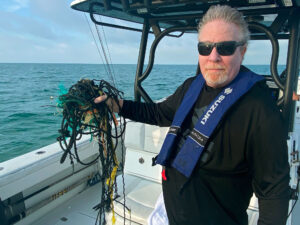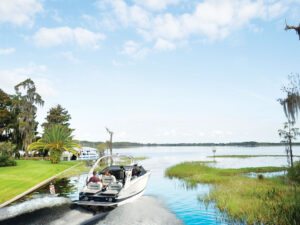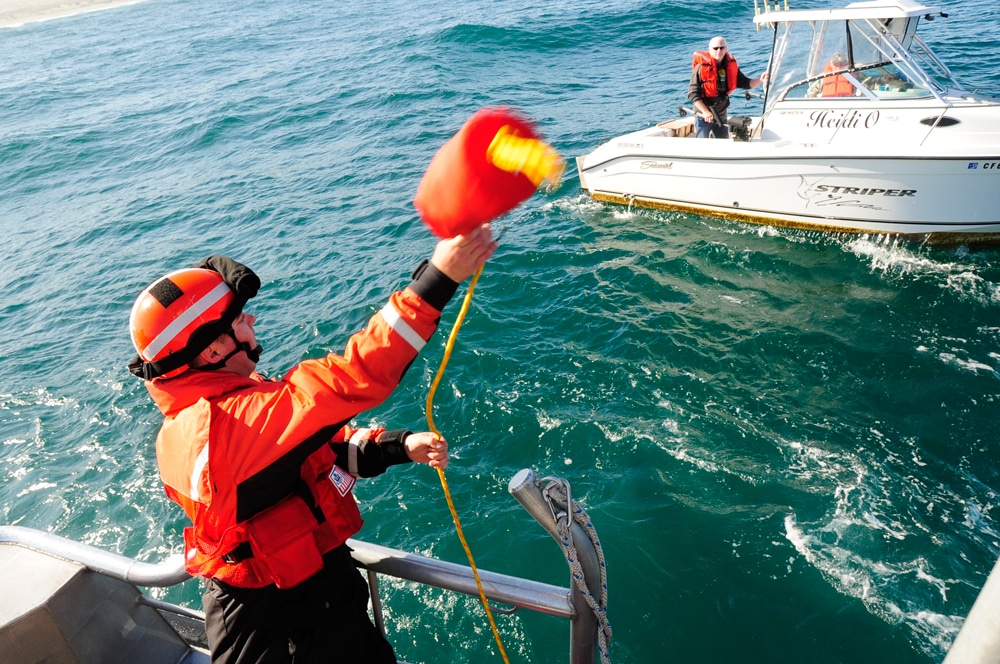
11 Tips for Avoiding Boat Accidents
Although there are an infinite number of hints and tips for things you should do in the practice of good seamanship, there are only four absolute commandments. They are at the heart and core of boating, without which all else means nothing. The first is to stay afloat, here is the next. Stayed tuned for the rest.
The second commandment of seamanship is to keep from hitting anything. Collisions at sea are, at most, dangerous, and at least, embarrassing. A collision may be between your vessel and other manmade structures, such as another vessel, a buoy, or a dock. Or it may be between your vessel and the bottom. The latter may be called a grounding, stranding, or shipwreck, depending on the length of time your vessel stays on the bottom.
One way to keep from hitting anything is to stand watch. Watch is an ancient marine word meaning, “To look or observe attentively or carefully; be closely observant.”
The most important area to watch is the water ahead, but don’t do so to the exclusion of the rest of the horizon. Every little while, do a rapid but methodical sweep across 360 degrees to see what might be sneaking up on you.
Have as few obstructions to vision as possible. Have high steering positions and low deckhouses. If you have the luxury of a wheelhouse, keep going outside for a better look around, especially at night or in fog.
Use binoculars. Remember that they gather light to your eyes at night. To pick up dim objects on the horizon at night, look a little above or below the horizon so that what you are looking for will be exposed to the most light sensitive parts of your eyes.
The Rules of the Road specify that you shall keep “a proper lookout.” Courts have interpreted this to mean a trained, vigilant seaman properly stationed and with no duty other than looking out. Because of the latter, helmsmen have been held by the courts not to be proper lookouts.
Of course, this legal interpretation may not be practical on small boats-and impossible when you go out alone. But such violation is only a concern if you hit something. To keep from hitting anything, helmsmen and every other person on the deck, insofar as possible, should act as lookouts.
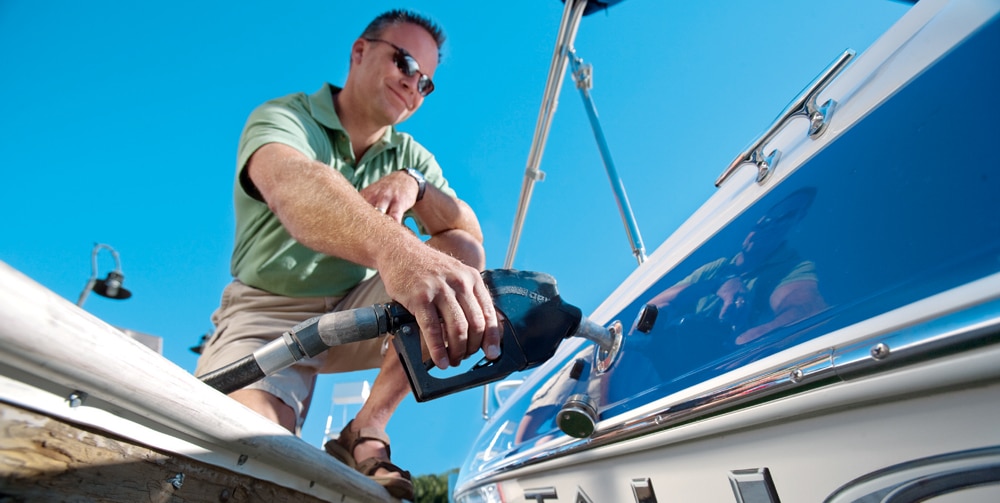
11 Tips for Avoiding Boat Accidents
1. Running Out of Gas
Running out of gas on the highway is no biggie. Call AAA. Even on the water, you can often call one of the towing agencies and it’ll bring you enough fuel to get you to port for a fair fee. But run out of gas in the middle of the Gulf Stream or at the headwaters of Niagara Falls — it’s happened more than you care to guess — and the situation can fast become dire. In the Gulf Stream, unless you have an EPIRB or satellite phone, or unless someone is in range of your VHF, you could be stranded indefinitely.
How can this happen, you ask? Well, you can miscalculate your return bearing and find yourself far from the inlet and far beyond your fuel range. Or you may have to skirt unexpected storms or even run offshore to avoid them. So, before you leave the dock, take stock of what you plan to do. Calculate the fuel you think you’ll need to go out, play or fish, and return safely to port. Then add 10 to 20 percent more. If I’m going 25 miles offshore to fish, I figure 15 gallons out, 15 gallons back and 15 gallons to fish. Then I add an additional 5 to 10 gallons for a safety margin.
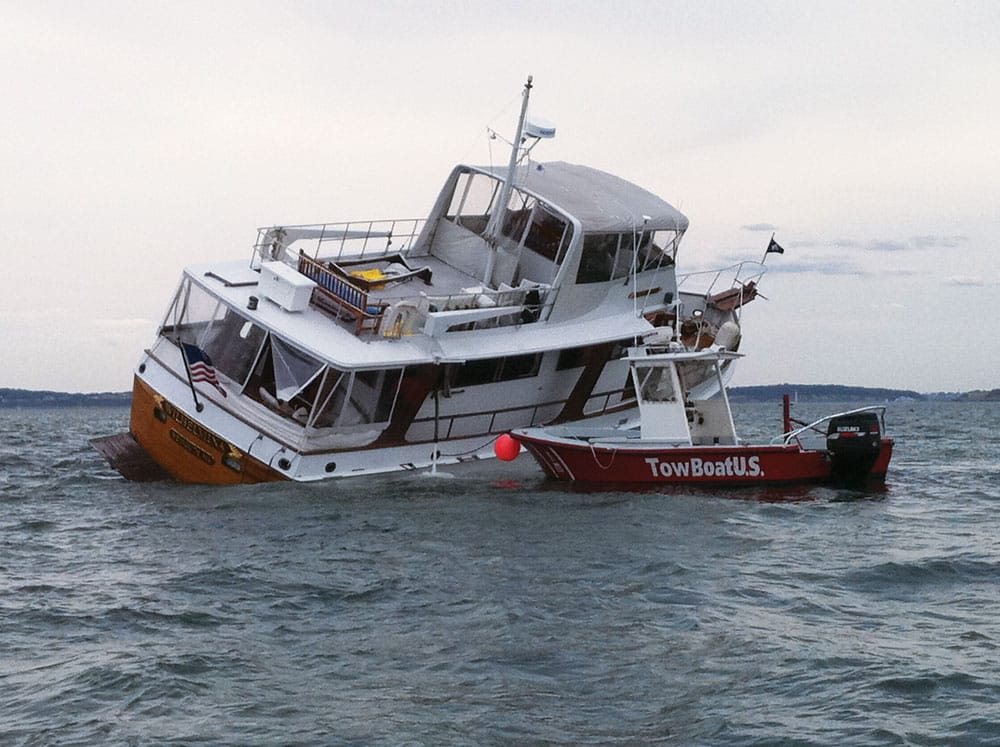
11 Tips for Avoiding Boat Accidents
2. Running Aground
Usually, grounding your boat is only an embarrassment — but not always. I used to commute by boat from home to our resort and marina on Lake of the Ozarks. At least once per summer, I’d come upon a boat far up in the woods on an early Sunday morning. The partyers had been out late the night before, drinking too much, driving too fast and missing the cues that they were coming up on hard ground. On one occasion the boat — visible through the swath it had cut through the trees until a big oak stopped it — was clearly bloody. It’s not the grounding that hurts you — it’s the sudden stop.
Many times grounding leaves you in the water but on a sandbar. Too many boaters are eager to yank their craft off the rocks and end the humiliating saga. But don’t do it until you’ve gone below to make sure the bilge is not filling with water through a crack in the hull. It’s better to be safely aground than sinking.
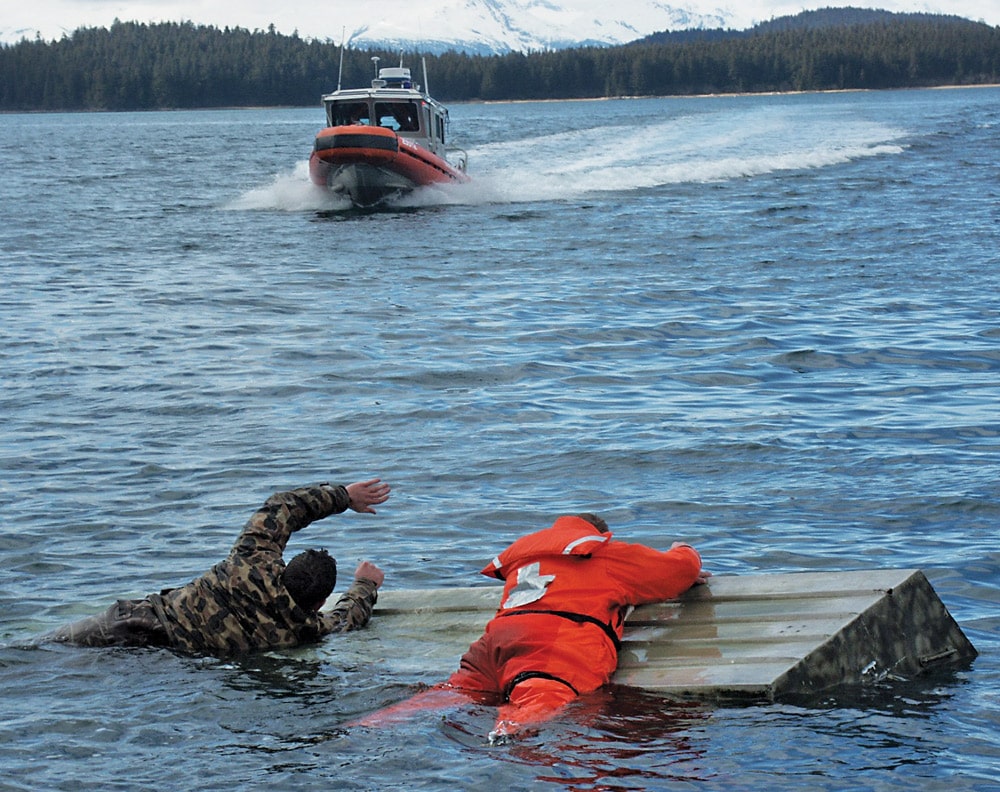
11 Tips for Avoiding Boat Accidents
3. Falling Overboard
Falling overboard is another event that’s usually little more than a short-lived — albeit wet — humiliation. But if you hit your head on the way out of the boat and knock yourself unconscious, you won’t float face up. Wear a life jacket.
Of particular danger to solo boaters who fall overboard is that the vessel is likely to continue on without you until it runs out of gas. Some boats turn in a hard circle, surrounding you in wakes and threatening to run you down. Wear the emergency cut-off switch lanyard so that, if you are tossed from the helm, the boat stops in its tracks.
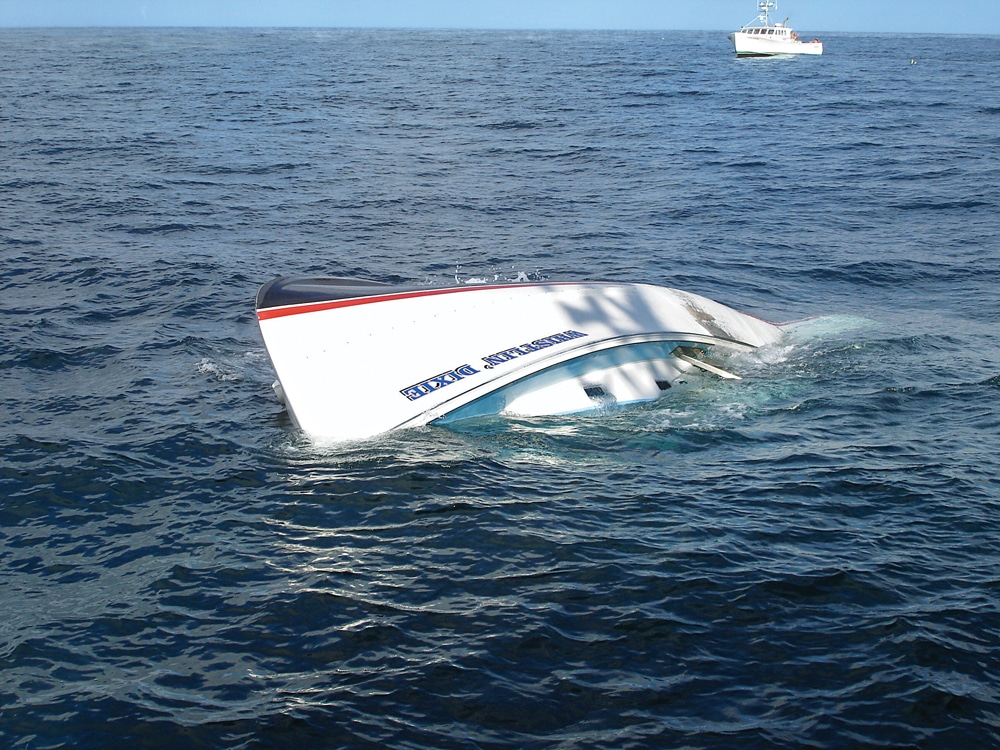
11 Tips for Avoiding Boat Accidents
4. Sinking
The most likely cause of sinking is laughably simple: a hole in the boat. How do they get there when you’ve never hit anything? Through-hull fittings. They bring water in or out through the hull, and these connections are vulnerable. Bronze through-hulls are best, but stray electrical current in the water from other boats or from pier wiring can dissolve them.
Plastic through-hulls are vulnerable to a mechanic’s misstep — one could break substantially and begin leaking later, only when the boat begins cruising in rough waters. Wiggle the through-hulls, looking for loose connections or other damage. Also, inspect the bilge before departing, and make sure the bilge pump is working properly and the garboard plug—many call it the bilge plug—is in place. Keep available a handful of wooden bungs (tapered pegs you can pound into a broken through-hull to stop the water).
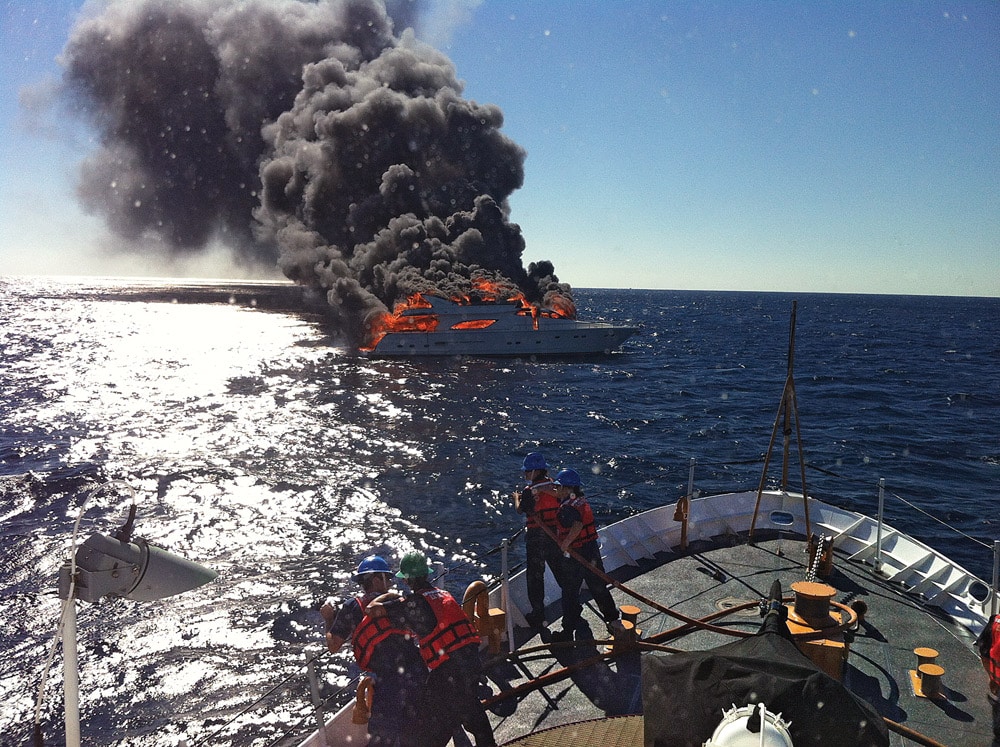
11 Tips for Avoiding Boat Accidents
5. Catching Fire
Fire on board is becoming increasingly rare, since boats are built with more-spark-protected mechanical systems and double-clamped fuel lines, but it still happens. I’ll never forget a group of partyers that rented one of our boats. They took off smoking and returned hours later with beer cans strewn through the boat; they’d acquired their brews after departing. When the boat slid into the slip, it was apparent it had had a catastrophic fuel leak. Gas had dissolved the carpet glue and it was drenched with fuel. Fumes glistened above the gunwale, and, to my horror, two of the boaters had cigarettes dangling from their lips. They were clearly too drunk to understand the danger they were in.
Always sniff the bilge for stray fuel fumes before departing. Look for signs of leakage like obvious fuel on the bottom or a rainbow-like slick on bilge water, and never start a marine engine without running the bilge blower at least five minutes. Make sure you have the proper fire extinguishers on board for fuel or electrical fires, and make sure they remain charged from season to season. Have them inspected by a fire department, or simply replace them if the charge gauge drops out of the green.
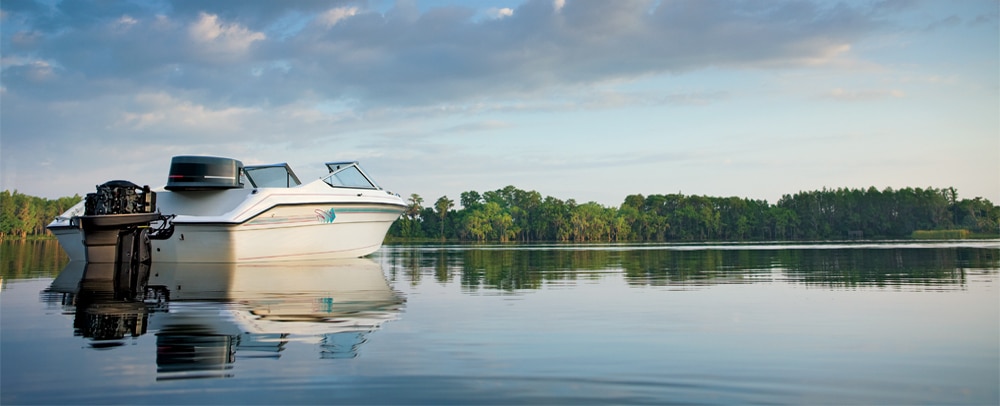
11 Tips for Avoiding Boat Accidents
6. Breaking Down
According to U.S. Coast Guard statistics, many serious accidents occur due to mechanical failure. A faulty battery could mean the boat won’t start; if it happens at night, the light won’t work either. At that time, your boat is stranded, helpless and practically invisible.
Many boats are now equipped with absorbed glass mat batteries that require no maintenance and don’t leak or boil off battery acid. They will stand you in good stead. But, if you have a flooded cell battery, be sure to check it for proper fluid levels every weekend. Add only distilled water as necessary. Monitor engine instrumentation to keep an eye on battery voltage; it should reflect no less than 12 volts. Be particularly careful to monitor battery levels when using the stereo or other 12-volt equipment on board. As a backup, carry a flashlight on board as a signal light, and definitely make sure the safety kit includes flares to mark your position.
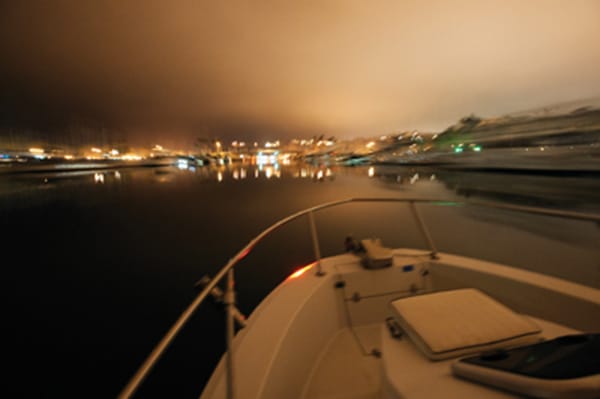
11 Tips for Avoiding Boat Accidents
7. Speeding at Night
One of the chief causes of boating accidents is failing to maintain a safe speed for the conditions. At night, you can’t always trust your senses to determine whether the way is clear. For example, another boat’s lights may have failed, creating a navigation hazard. The rules don’t forgive boaters who fail to travel at a reasonably safe speed for the environment, especially at night.
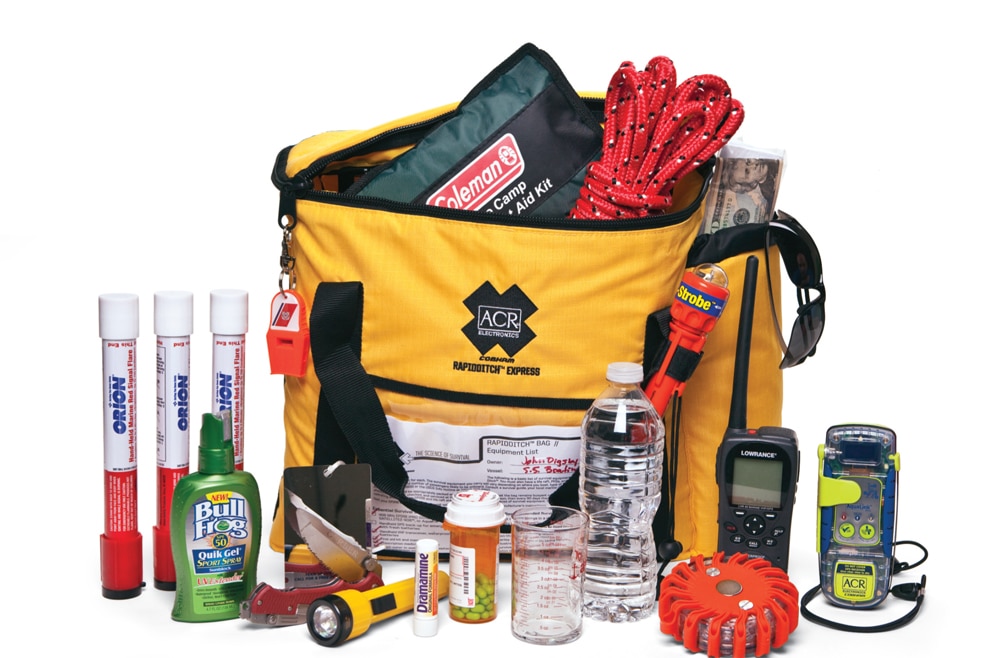
11 Tips for Avoiding Boat Accidents
8. Lacking Proper Safety Gear
Too many boaters don’t pay attention to the safety gear on their boat. Often they’ll depart without the proper number and sizes of life jackets. I once rescued three boaters when their boat sank. One was a small child who couldn’t keep his head above water without assistance because his father had put him in an adult-size life jacket. Make sure life jackets fit and are properly adjusted to the people who will be wearing them.
Others leave port without working flares, properly functioning running lights or horn, or alternative propulsion such as a canoe paddle (required in some locations). Boaters often overlook the safety value of anchors as well, thinking they are needed only for rare occasions. But an anchor is the first line of defense in a breakdown or storm. It keeps your boat safely in place should the engine fail.
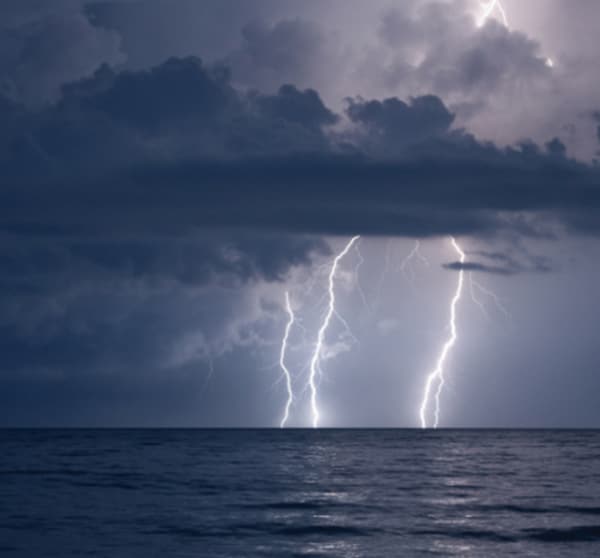
11 Tips for Avoiding Boat Accidents
9. Ignoring the Weather
I like some of the new stereo systems that also receive NOAA weather stations, enabling boaters to keep up with changing weather conditions. Handheld VHF radios also give NOAA forecasts. Keeping an eye on the weather is as important as maintaining a lookout while piloting a vessel. Don’t leave port on the news of questionable weather, and don’t leave port without even checking for that news. Poor visibility and high seas — even lightning or waterspouts — are among the risks boaters face if they ignore weather reports and don’t watch the horizon. The responsibility to successfully navigate such situations when you could have avoided them altogether falls directly on the shoulders of you, the skipper.
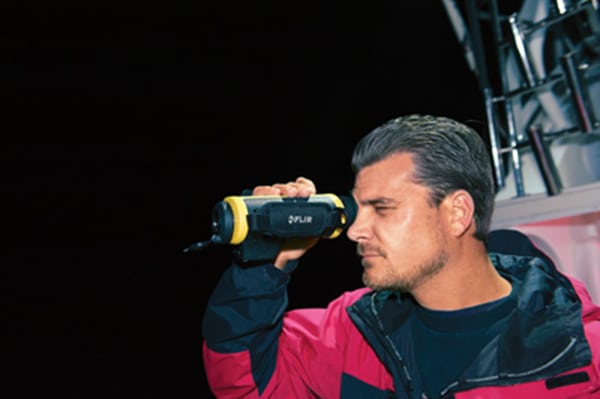
11 Tips for Avoiding Boat Accidents
10. Failing to Maintain a Lookout
When there is a collision in boating, the reason tendered by the victims is usually, “I didn’t see them coming.” Well, it’s your job to see them coming. Whether at anchor or on the fly, maintaining a lookout is mandatory for safe boating.
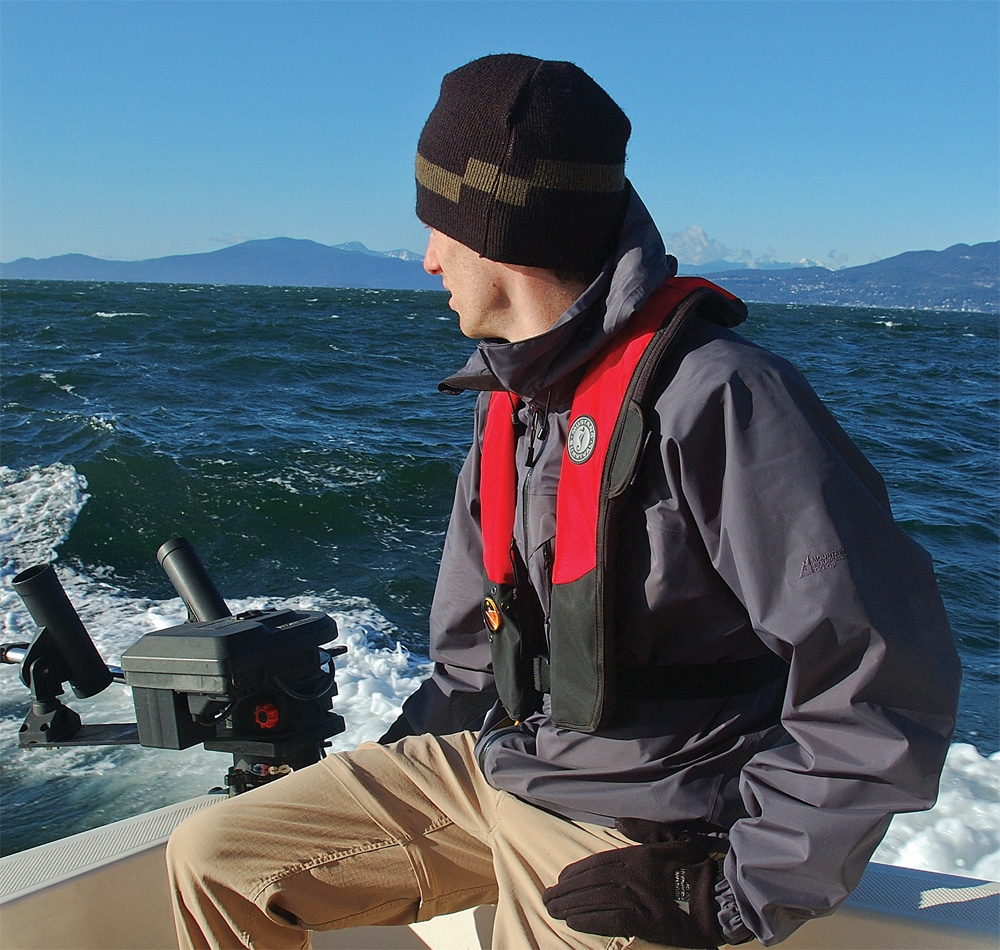
11 Tips for Avoiding Boat Accidents
11. Not Wearing a Life Jacket
We’ve talked about life jackets before. They save lives. In fact, according to Coast Guard statistics, about half of the drowning fatalities in boating involve boaters without life jackets. You might think having one nearby is good enough; you can always grab it as you need it. But it’s unlikely you’ll ever get it on once in the water. If the water is cold — say, 50-something degrees Fahrenheit — you have only a few moments of coordinated movement before your muscles shut down and you can’t hold your head out of the water. If you aren’t going to wear your life jacket at all times, be mindful of the most critical times. Keep it handy, and put it on in rough weather, during night passages and always in cold-weather boating situations — the numbers show that too many boaters who enter cold water unexpectedly die within minutes from being unable to get out of it.
The first consideration when avoiding hitting a vessel is to determine when there is a risk of collision. This occurs when another vessel is closing with you on a steady compass heading. Take a bearing of the other vessel while it is still far away. The Rules of the Road state: “If the bearing does not appreciably change, such risk [of collision] should be deemed to exist.” The Rules are correct.
It is best to keep track of the other vessel using a hand-bearing compass. If you don’t have one, observe if the relative aspect of the other vessel (45 degrees on the starboard bow, just abaft the port beam, etc.) is remaining constant.
To keep from hitting another vessel that is closing with you on a steady bearing, someone must change course or speed. The other boat may change course or speed, but then again, it may not. You can depend on your own actions, you can’t depend on the other boat’s.
One of the best defensive maneuvers is to stop. Another good defensive maneuver is to turn away from the other vessel in a huge circle and then come back on your course and keep going as if the other boat had never been there. Make big course changes that are obvious to all.
There may not always be enough space to maneuver defensively. In that case, the only way to keep from hitting the other boat is for the two of you to do a careful dance according to an elaborate, rigid choreography. The three basic maneuvering situations are: meeting, crossing, and overtaking.
When meeting head-on, never turn left. Don’t even come left the tiniest bit. If it looks as if you are going to pass the other vessel starboard to starboard, and you are uncomfortable about the closeness of the approach, make a great big, early right turn so you can come back on course and pass comfortably far away for the more proper port to port.
When crossing another vessel, never turn left. If you’re on the right, and thus the “stand-on” vessel, according to the Rules of the Road, you must continue on course. If you’re on the left, and thus the “give-way” vessel, turn right or slow down to let the other vessel cross ahead. Don’t try to cross ahead of a vessel that must continue on course.
When overtaking, the vessel doing the passing must keep out of the way of the vessel being passed. While the Rules say that the overtaken vessel must maintain course and speed, it’s good manners-when safe-for the overtaken boat to slow down to make it easier for the other to pass.
Buy the best good compass you can afford. Keep magnetic stuff away from it. Learn the deviation of your compass at different headings and apply it.
Sooner or later you’ll get lost. No matter. Trust what little information you have and proceed with caution. Stop and take soundings. Try to fit them to the soundings on the chart. Even if they won’t fit, there’s nothing like a nice deep sounding to give you courage. You can always say to yourself: “I may be lost, but I ain’t aground.”
Try not to hit docks. When you bring your vessel in to a dock, make an eggshell landing-imagine holding an egg between you and the dock without cracking its shell. Move in slowly. Make your landing with patience and grace. Land with majesty, not panic. Don’t depend on a blast of power in reverse-you may never get it.
Pick the lee side of the dock for a landing. If you have to land on the weather side, stop a ways off and let the wind set you in on the dock slowly. If wind and tide are taking you away from the dock, get a line over and make it fast somewhere amidships. Then you can go ahead or astern on it, as the case may be, using it to bring yourself right in alongside.
So, my simple message is: If you keep on watching where you’re going, you probably will keep from hitting anything; if you don’t, you won’t. Amen.
The book The Elements of Seamanship, from which this article has been condensed, is available from The Gestalt Journal Press, Box 990, Highland, NY 12528
Fog greatly complicates keeping a lookout. Black-and-white objects show up best in the fog-thankfully the white foam from breaking waves can appear quite dazzling.
Distance becomes difficult to judge. When you first see something coming out of the fog, it’s hard to know whether it’s something big far away or something small close aboard. This is why you should reduce your speed. The old axiom is that you must be able to stop in less than half the distance of visibility.
Blow fog signals. Listen for the fog signals of other vessels. Remember that the sound of your engine can drown out the sound of another vessel’s fog signals. Occasionally stop and listen.
The Rules of the Road state that if you hear the fog signal of another vessel ahead of you, you “shall, so far as the circumstances of the case admit, stop…engines.” Then you may proceed with caution until you hear the fog signal of the other vessel astern of you.
Try to know where you are in fog. Take full advantage of any periods of greater visibility. Get any kind of fix you can, anytime you can. In fog run for sound signals. Silent buoys are hard to find.
If silent buoys are hard to find in the fog, they are all too easy to hit at night. Watch out for them. Never take a navigational light for granted. Time it, and time it again until you are absolutely positive of its identification. Don’t assume it’s the light you expected it to be.
To keep from hitting the bottom (running aground), keep track of where you are. If you’re not sure where you are, steer a course you know is safe-even if it involves extra distance.
Charts are remarkable documents and great bargains. A chart contains a vast array of accurate information. Don’t skimp on charts. Buy them and use them. Don’t be embarrassed to own a chart of your home waters and to consult it frequently. Familiarity breeds contempt. If you allow it, you will probably hit something.
Keep track of your position on the chart roughly, but frequently, using cross bearings by eye; ranges, when you’re lucky enough to have things line up; and distances between locations. It might go something like this: “Let’s see, I’m opposite the south end of that island. Its other end and that headland are nearly in line. And I’m a third of the way from that buoy to the mainland. That puts me about here.”

